Presented by Kristin Hjellegjerde
Exhibiting his work at 1-54 Contemporary African Art Fair London with Kristin Hjellegjerde, Ethiopian artist Dawit Abebe seeks to better understand the ‘in-between’. Inspired by the smartphone, and working with collage and acrylic paint, Abebe focuses on the liminal space humanity both inhabits and negotiates – finding that the ‘in-between’ is a fertile space for the emergence of new understandings, ideas, sounds, images and narratives.
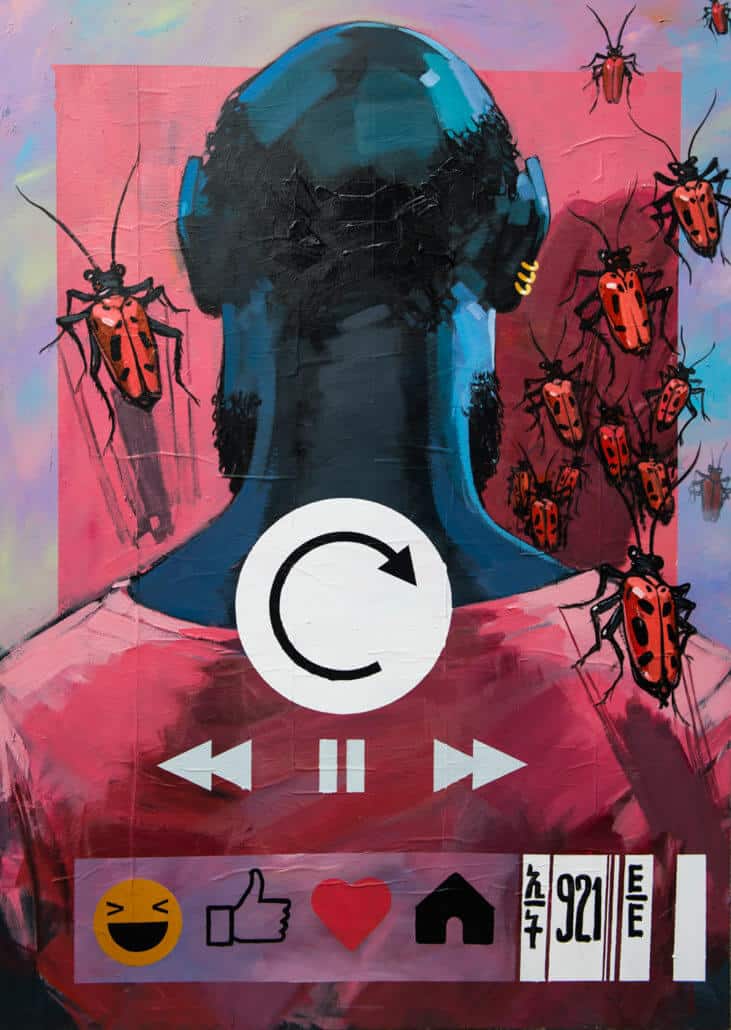 Dawit Abebe, GAP9, 2018. Acrylic on canvas, 210 x 150cm. From the series Liminal in the age of mobili-ty. All images courtesy of the artist & Kristin Hjellegjerde.
Dawit Abebe, GAP9, 2018. Acrylic on canvas, 210 x 150cm. From the series Liminal in the age of mobili-ty. All images courtesy of the artist & Kristin Hjellegjerde.
ART AFRICA: You have mentioned your interest in ‘the in-between’ – “that gap found between two situations or realities, the gap that exists within space, time, culture, history, gender, knowledge and information”. What is it about this notion that interests you?
Dawit Abebe: I am particularly interested in the new ‘things’ that are born – be it as images, ideas, sounds or stories – from my understanding, and how these ‘things’ are assumed to be a reality. I’m interested in this reality and my personal experience of it.
What I learnt at school or came across as information or narratives during my lifetime may be different from the experiences of others, and perhaps, even totally the opposite of what actually happened. I am constantly intrigued by my own discoveries of such gaps between ‘things’, which I attempt to incorporate in my work.
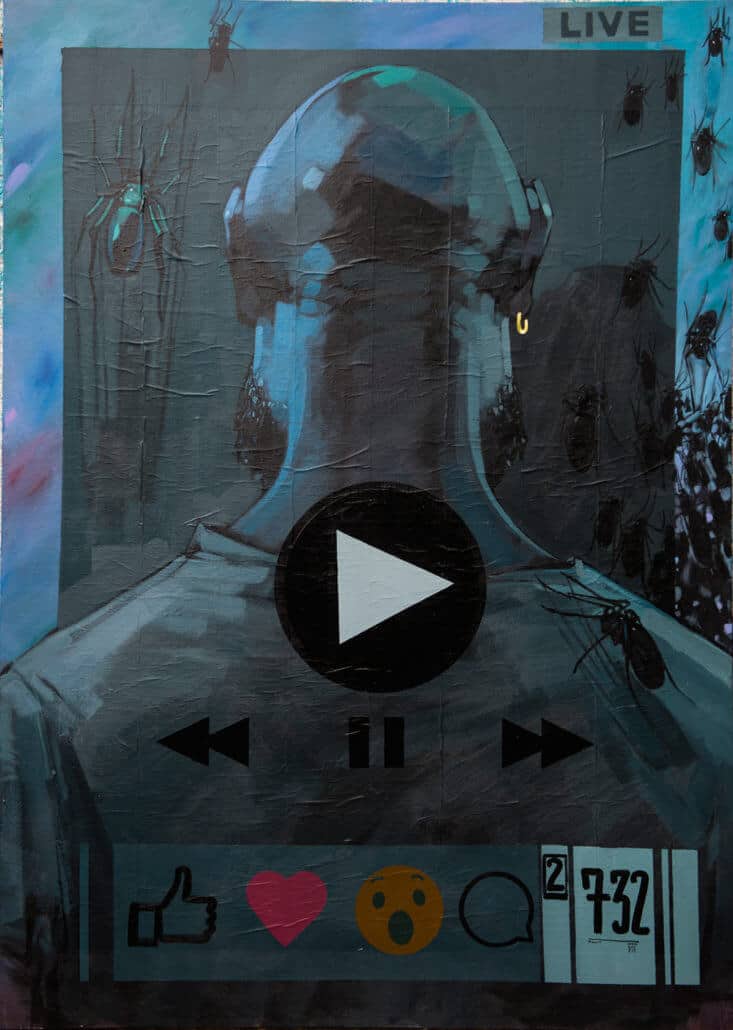 Dawit Abebe, GAP8, 2018. Acrylic on canvas, 210 x 150cm. From the series Liminal in the age of mobili-ty.
Dawit Abebe, GAP8, 2018. Acrylic on canvas, 210 x 150cm. From the series Liminal in the age of mobili-ty.
In a number of your paintings, you’ve featured flies and dragonflies – what is the significance of this, especially with regards to your concern around ‘the in-between’ and the liminal?
Ever since I was a child, I have been fascinated by the beauty and life of insects. They were abundant when I was young. You could see them everywhere and their presence was taken for granted like the wind, sun and moon. That is not the case anymore. They are literally extinct in the city.
The body of work I created in 2017, ‘Quo Vadis’ at Kristin Hjellegjerde gallery, incorporated images of insects and dealt with issues of man, nature and the impacts of urban transformation on the environment. I used flies, bees, and dragonflies to represent nature. I was particularly interested in exploring the extent to which man is destroying his natural habitat in the name of civilisation and is becoming more and more alienated from himself and mother earth.
My exploration focuses on that liminal space we are all currently inhabiting and trying to negotiate. In the case of my country, we are neither ‘developed’ as the first world nor ‘underdeveloped’ as we once were – thanks to the advent of new democratic and accessible technology. We are losing our identity and finding ourselves in that confused in-between space where our natural equilibrium is becoming more and more precarious.
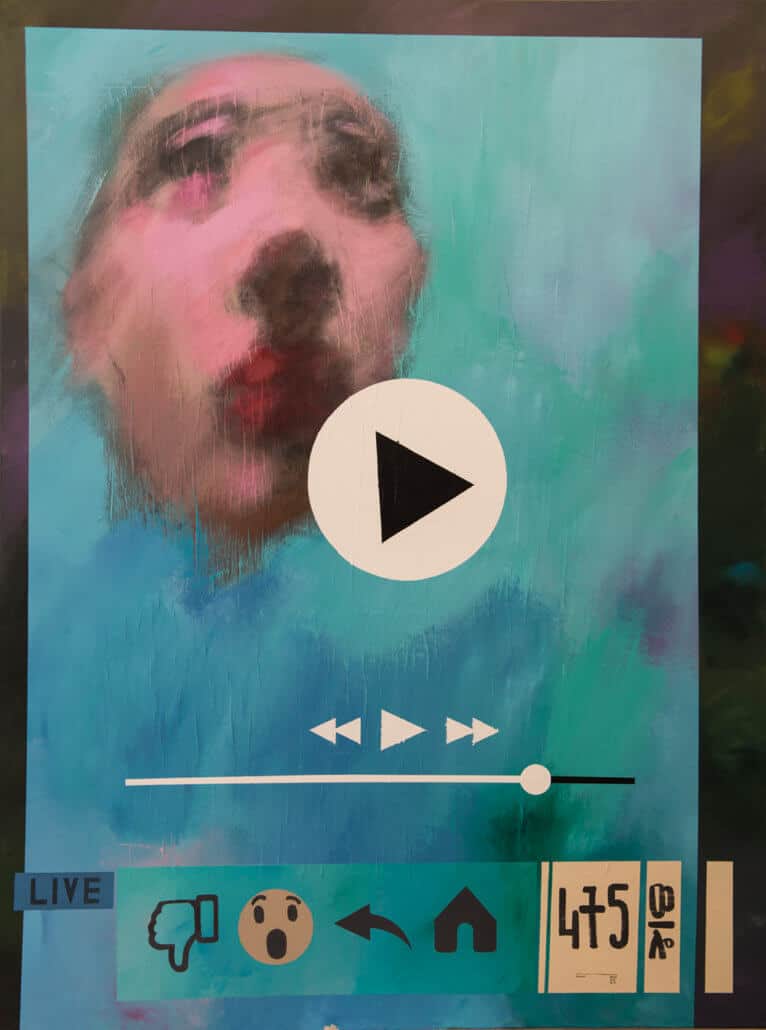 Dawit Abebe, GAP4, 2018. Acrylic on canvas, 210 x 150cm. From the series Liminal in the age of mobili-ty.
Dawit Abebe, GAP4, 2018. Acrylic on canvas, 210 x 150cm. From the series Liminal in the age of mobili-ty.
You’ve taken inspiration from the smartphone for this body of work – could you please expand on the significance of the smartphone’s universal symbols, and how you have incorporated them into your work? And why?
As we all know, through technology, the world is getting smaller and smaller by the day. It is amazing to me to see that there is a language per se made up of symbols that helps people communicate irrespective of their origin or culture.
However, I am also worried about the damages that are easily caused by using social media for negative purposes. Information is disseminated in no time, and without verification. Everyone is an expert in all issues be it politics, history or other topics. The personal becomes public without refrain and confusion reigns. I have used smart phone images and symbols in my work to explore the intricate problems that arise through communication and miscommunication via modern-day technology and gadgets.
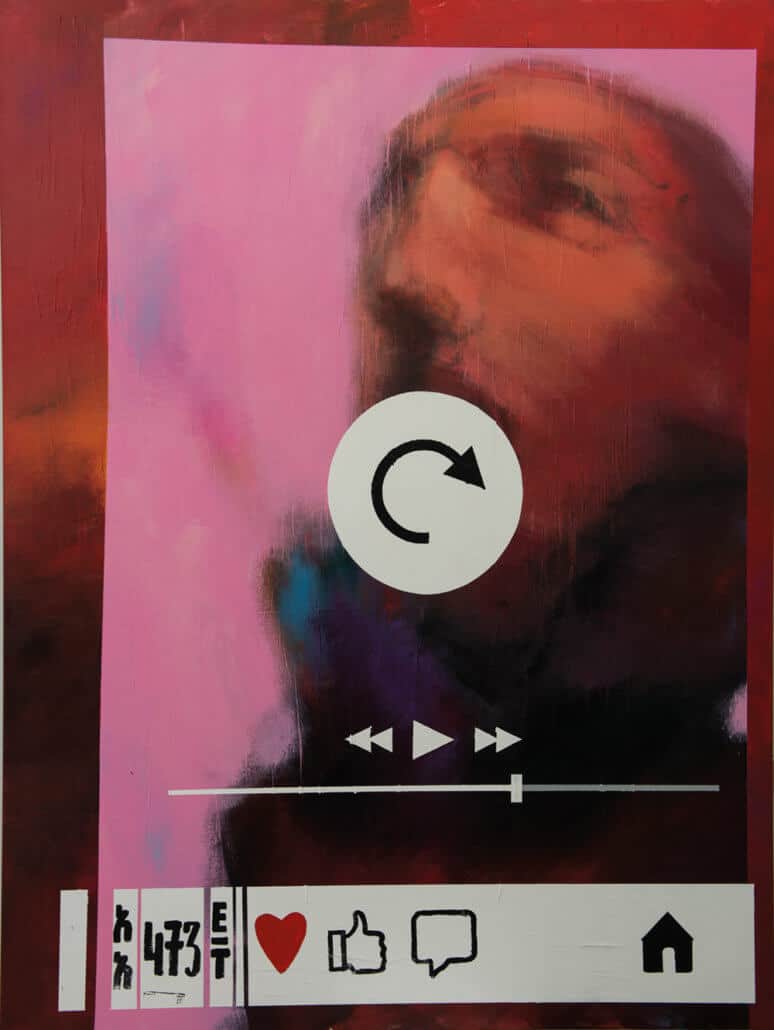 Dawit Abebe, GAP3, 2018. Acrylic on canvas, 210 x 150cm. From the series Liminal in the age of mobili-ty.
Dawit Abebe, GAP3, 2018. Acrylic on canvas, 210 x 150cm. From the series Liminal in the age of mobili-ty.
In considering the smartphone, you’ve also looked at the fragmentations, cracks and disconnections that occur during communication. How do these ‘issues’ relate to your work, and why are they an important aspect for you, personally, to explore?
I live in Ethiopia while my family is based in Europe. We use the smart phone to communicate at least once, if not two or three times, a day. The inspiration for this body of work comes from my own daily personal experience of keeping in touch with my loved ones. On their side, there are no network problems and it is taken for granted that communication is clear and available all the time.
Whereas for me, at times it is a real struggle to connect and have a proper conversation without blurred images and cracks in the sounds. I have gradually become obsessed with those moments of fragmentations and disconnections when information and communication take their own meanings during the in-between, and inevitably new ideas and stories emerge.
In your pursuit of understanding the ‘in-between’ – what have you found it to be?
I am not sure if I can claim that I have found the exact answer yet. I am still in the process of exploring the notion of ‘in-between’ and as I go along I’ve noticed that I raise more questions than answers. My work is open ended and the viewer’s feedback is an integral part for my own further understanding of the issue. What is already clear to me, though, is the fact that the ‘in-between’ in itself is a fertile space for the emergence of new understandings, ideas, sounds as well as images and narratives.
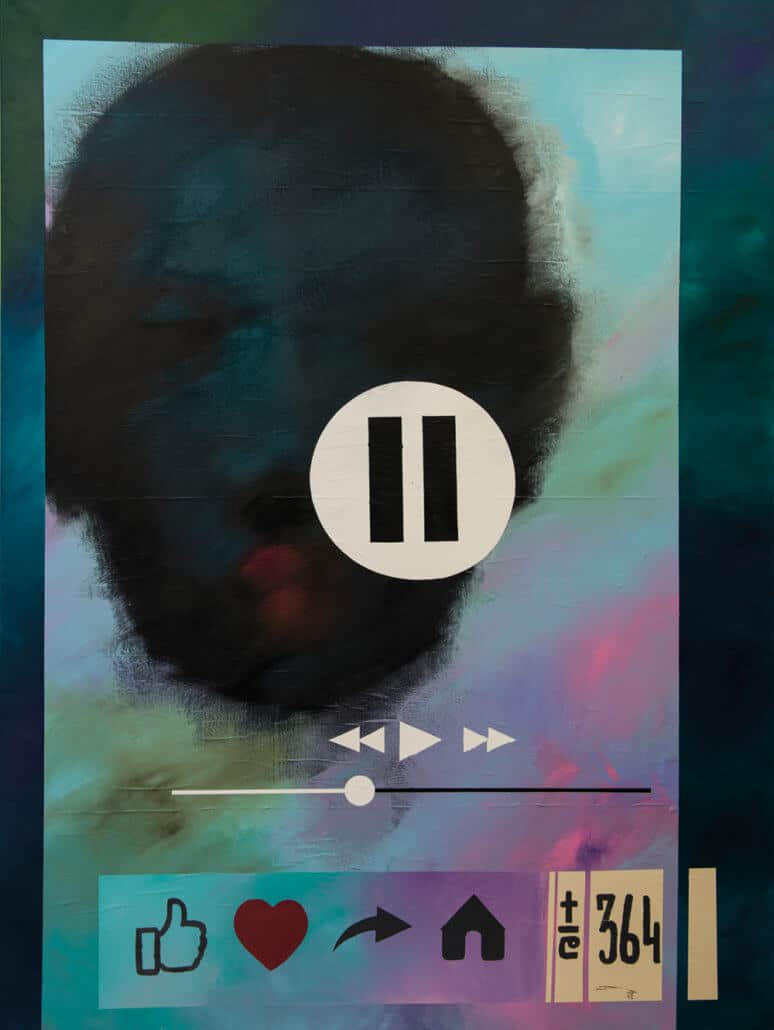 Dawit Abebe, GAP2, 2018. Acrylic on canvas, 200 x 150cm. From the series Liminal in the age of mobili-ty.
Dawit Abebe, GAP2, 2018. Acrylic on canvas, 200 x 150cm. From the series Liminal in the age of mobili-ty.
For more information, please contact:
Kristin Hjellegjerde
kristin@kristinhjellegjerde.com



